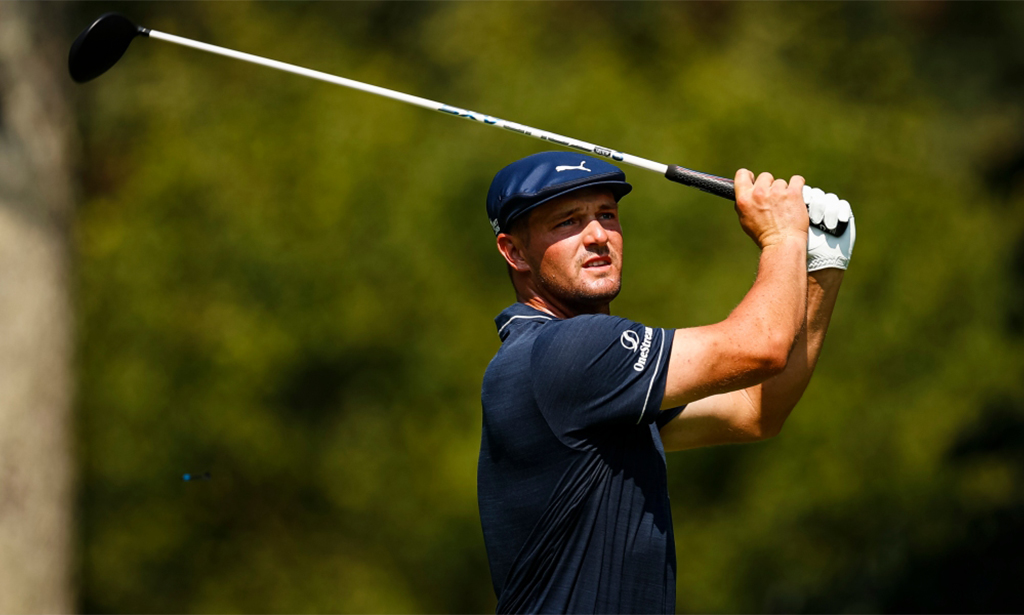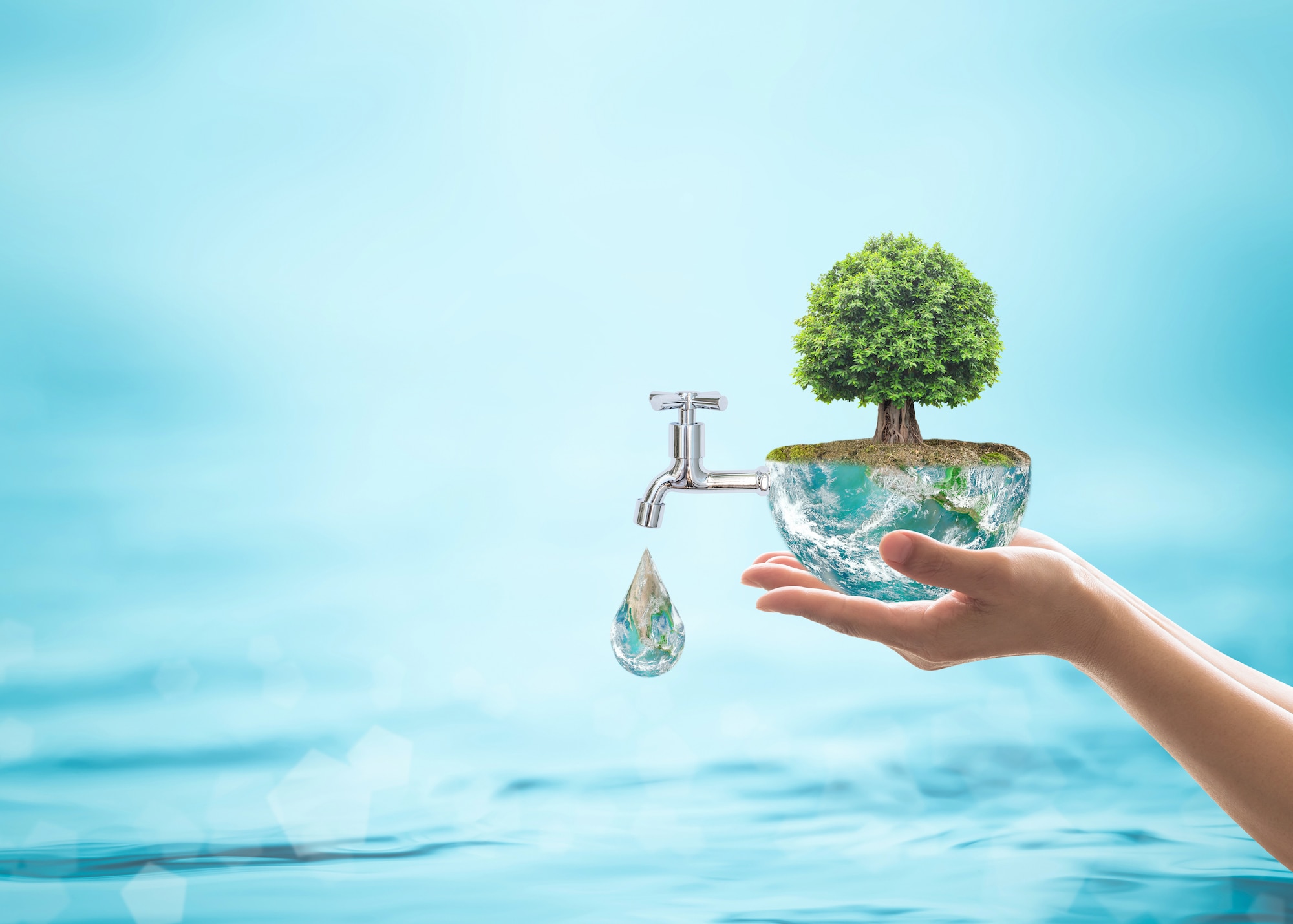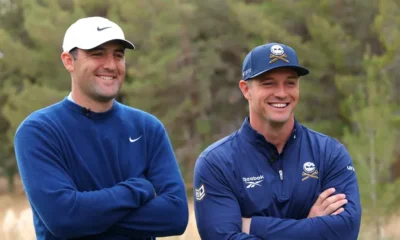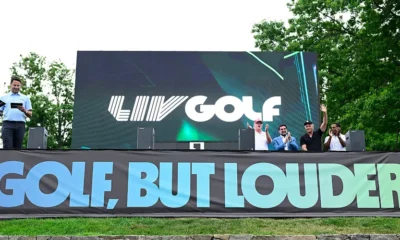Blog
Golf Introduces New “Bryson” Rule to Limit Driver Length

Around this time last year, the world was different. We were amidst a global pandemic, parents were thrust into the job of teachers as schools were, for the most part still solely online learning, and oh yeah…48-inch drivers were one of the hottest topics in the golf equipment world. That was mostly thanks to Bryson DeChambeau’s announcement that he’d be testing longer drivers following his 2020 U.S. Open win.
Mind you, DeChambeau had just lapped the field at Winged Foot, quite literally one of the most difficult U.S. Open venues statistically. Then he does what? He starts talking about his plan to test out even longer drivers to push his distance limits. This clearly got the golf worlds attention. Fast forward 12 months…
You could almost hear the thoughts swirling in the heads of his competitors heads: If Bryson gets even longer, I’m gonna be forced to keep up. Shoot, I can’t keep up now. I must be better! Others were likely more skeptical of longer drivers and wanted nothing to do with it.
All that said, either way, DeChambeau did bring up a viable point. Why not experiment with longer driver builds to see if there’s significantly more distance to be had?
In the wake of DeChambeau’s declaration, some tour players ordered 47- and 48-inch drivers from their PGA Tour equipment reps to try out. “If he is gonna do it, why cant I? Afterall, he is the mad scientist of golf” As onlookers, and experimenters ourselves, we speculated: Will 48-inch drivers REALLY become the new norm? Will so many players switch into longer drivers that 8,000 yard golf courses will become the new norm?
I suppose, if you really wanted to, you could argue that distance was already an issue on the PGA Tour. Hell, even without longer drivers being thrown into the equation. The USGA has certainly been researching the distance debate for itself.
In the last year, though, 48-inch drivers haven’t quite taken over professional golf like some thought they might. Sure, Viktor Hovland has experimented with the concept. And yeah, Phil Mickelson won the 2021 PGA Championship with a driver measuring 47.9 inches (Bet you didn’t know that gem).
But as the PGA Tour discovered in its recent research on the matter of driver length, it really only impacts a very small segment of tour golfers. The numbers you ask, well I am glad you did. A mere 3 percent of professional players use clubs longer than 46 inches. That’s not exactly the takeover that us equipment insiders were anticipating. Surely golf wouldn’t make a rule that affects 3 out of 100 golfers and makes the game less fun? Right?
Regardless, on Tuesday, the USGA and R&A announced a new local rule option to limit driver length to 46 inches. That’s right, its an option. So, week in and week out the rules governing this will change based on who is hosting the event. 1 week it’s OK, but the next may be… “nah, sorry man – it’s a hard no for us”. It’s kind of like reservation gambling at the native American casinos. Its illegal over here, 1 mile away, BUT over here, 1 mile east, you are playing blackjack and penny slots to your hearts content and it’s all good. Something seems off to me on this one…
“Admittedly, this is not the ‘answer’ to the overall distance debate/issue, but rather a simple option for competitive events,” Mike Whan, the USGA’s chief executive officer, said in a statement. “It’s important to note that is not a ‘Rule of Golf,’ and as such, it is not mandated for the average, recreational golfer. Rather, this is an available tool for those running competitive events.”
In a statement, the PGA Tour then announced that it would implement the local rule for its competitions starting on Jan.1, 2022.
“After understanding the feedback received from the golf manufacturing community, we also undertook a survey of usage of clubs in use across the PGA Tour, PGA Tour Champions and the Korn Ferry Tour and found that a very small number of players either have used or are currently using clubs greater than 46 inches,” the statement read. “The PGA Tour Player Advisory Council recently reviewed the subject and we have concluded that the PGA Tour will implement the Local Rule on Jan. 1, 2022.”
We already know Mickelson’s stance on the subject, as you can watch in the embedded Tweets below. Spoiler alert, He don’t like it!
That got us thinking…What do other PGA Tour players think about the ban of drivers longer than 46 inches? Here’s what a collection of PGA Tour pros had to say at the 2021 CJ Cup following the news.
Justin Thomas
“Yeah, I don’t really agree with it,” Thomas told the press on Tuesday at the 2021 CJ Cup. “I think it’s — I don’t know. I feel like there’s a lot of other things, you know, like the arm-bar putter, that they should be approaching as opposed to the length of driver. I think the fact that you see only a few people using a long driver speaks for itself, that it’s not really that big of an advantage. It’s a lot harder to hit it straight.
“In terms of do I think it makes the game of golf and growing the game better? No, I don’t at all, but they seem to have their kind of mind around that for a while now, so it seems to be the issue because if there’s an amateur golfer or players at home that want to hit it a little bit farther, so be it. Or if there’s guys out here that want to have a chance to put it in play with a 47-, 48-inch driver, then power to them. I had that opportunity; I just chose not to. I don’t necessarily agree with it, but it is what it is.”
Kevin Kisner
“I don’t know what they’re trying to accomplish other than to keep people from hitting it far,” Kisner told GOLF.com. “I mean, the game’s moving in that direction. I think they’re just trying to figure out a way to keep it in some sort of a realm. But anything that makes the game harder I’m against. So, if it makes it harder, I don’t wanna do it. The game’s hard enough, man.
Dustin Johnson
“My opinion is more, I don’t think it matters what length someone uses, because the longer the driver gets the harder it is to hit straight,” Johnson told GOLF.com. “So, if you could hit a 48-inch driver and keep it on the planet, then more power to you. I’ve tested with ‘em, and yeah it goes further, but it also goes a lot more crooked. You lose a lot of control, so for me, I don’t think it’s necessary.”
Adam Scott
“My initial reaction is that I don’t think it’ll make any difference,” Scott told GOLF.com. “The only thing I can say is maybe for the future if everyone started using 47- and 48-inch drivers and they all started to go down that route, but for now I don’t see it making any real difference. I don’t know how many guys were using 47-inch drivers.”
Collin Morikawa
“Look, it’s not going to change my driver specs, I’ll tell you that, and I don’t think it’s going to change many other guys’ driver specs,” Morikawa told the press on Tuesday. “Is that the answer to hitting it shorter? No. You know, I think yeah, if you have a long driver and you see what Bryson did, you see what long drive guys do, they have a longer driver, right, and they’re able to hit it farther, but can you maintain that on the golf course? Hasn’t been done yet. Not saying it won’t be done, but you know like if a guy wants a 47-inch driver, I think they should let them, because why not?
“We’ve seen courses that you end up shooting 10-to-15 under, and it’s not because the course is 9,000 yards long. We don’t play that. It’s because it makes you shape shots; it makes you hit different shots and it’s all about course design. So that’s my opinion in it or on it, is that I think course design needs to be structured in a way where we don’t need 8,000-yard courses. Yeah, they’re great sometimes, but there’s a lot of short courses on our tour that don’t provide 25 under par and it’s because of the way the layout is and the conditions. So, I don’t think many guys have over 46 inches, their driver, anyways, so I don’t think it will change much.”
Hudson Swafford
“I mean I can’t hit a 48-inch driver, so, it doesn’t really bother me,” Swafford told GOLF.com. “I hit a 45-inch driver; pretty standard, actually a little shorter. So, it doesn’t really bother me. It is what it is. I don’t really care. But it’s interesting; people are trying it and picking up a lot of speed. I picked up like a 46-inch and picked up speed, but I can’t hit it straight. So, it didn’t do me any good.”
Stewart Cink
“I think it’s going to have zero impact on golf, because I don’t know if I’ve ever known a golfer to use a driver longer than that in competition out here,” Cink told GOLF.com. “I don’t think it’s going to be a huge impact. To me it seems like there’s other areas, if they want to address distance, the length of the shaft is probably not the main thing, it’s probably just to safest one from a legal standpoint.”
This article originally appeared on Golf.com

Golf, often perceived as a male-dominated sport, has seen numerous women defy norms, break barriers, and challenge the status quo. These pioneering women have not only made significant strides in the game but have also played a crucial role in reshaping the sport’s landscape. This article delves into the impressive careers of some of these groundbreaking women in golf, highlighting their incredible achievements and the enduring impact they’ve had on the sport.

Babe Didrikson Zaharias: The Woman Who Redefined Golf
Named “Woman Athlete of the Half Century” by the Associated Press in 1950, Babe Didrikson Zaharias is undoubtedly one of the most remarkable athletes in history. Her golfing career was nothing short of extraordinary.
Triumph Against the Odds
Despite facing resistance from the golfing establishment for her flamboyant personality and style of play, Zaharias refused to be sidelined. She won a staggering 10 LPGA major championships and 41 LPGA tour events, setting stage records and leaving an indelible mark on the sport.
Paving the Way for Others
Zaharias also co-founded the Ladies Professional Golf Association (LPGA), creating more opportunities for women in professional golf. Her tenacity and resilience inspired countless women to pursue their golfing aspirations, forever changing the face of the sport.

Nancy Lopez: A Beacon of Inspiration
Nancy Lopez is another trailblazing woman in golf. A child prodigy, Lopez first made waves in the golfing world when she won the New Mexico Women’s Amateur at just 12 years old.
.jpg)
A Stellar Career
Lopez turned professional at the age of 21 and quickly established herself as a dominant force in women’s golf. She won 48 LPGA Tour events, including three major championships, and was inducted into the World Golf Hall of Fame in 1987.
Inspiring Future Generations
Lopez’s impact extends far beyond her impressive record. She is widely respected for her sportsmanship, dedication, and spirit, and her success has inspired many young girls to take up golf.
Annika Sorenstam: Shattering Glass Ceilings
Annika Sorenstam is widely considered one of the greatest female golfers of all time. The Swedish star boasts an astounding 72 LPGA Tour victories, including 10 majors.
Making History
In 2003, Sorenstam made history by becoming the first woman in 58 years to compete in a PGA Tour event. This monumental moment not only put the spotlight on women’s golf but also challenged the gender divide in the sport.
Championing Women’s Golf
Post-retirement, Sorenstam has remained a powerful advocate for women’s golf. Through the Annika Foundation, she works to provide opportunities for young female golfers and promote the sport at the grassroots level.
Conclusion: The Legacy of These Trailblazing Women
The contributions of Zaharias, Lopez, and Sorenstam to golf are immeasurable. They’ve not only shattered records and broken barriers but also opened doors for countless women in the sport. Their legacies serve as a testament to the power of determination, talent, and hard work. They have reshaped the world of golf, proving that the fairway is no longer just a man’s domain.
These women have paved the way for the next generation of female golfers, who continue to push boundaries and redefine the sport. As we celebrate these pioneering women, we look forward to seeing more women rise, conquer, and leave their own mark on the fairways.
Today, women in golf continue to make strides, thanks in part to the trail blazed by these pioneering women. Let their stories inspire you to break barriers in your own field, whatever that may be. Because when it comes to achieving greatness, the most important shot in golf, as in life, is the next one.
Blog
Sustainability in Golf: The Future of Eco-Friendly Greens
Read about the environmental impact of golf courses.

Golf, a sport often associated with pristine, manicured greens and lush landscapes, isn’t historically perceived as eco-friendly. However, with growing concerns about climate change and sustainability, the golf industry is steadily transitioning towards more sustainable practices. This article will explore how golf courses around the world are becoming greener and more eco-friendly while maintaining their appeal to golf enthusiasts.

The Environmental Impact of Golf Courses
Golf courses traditionally use extensive resources, including water, pesticides, and fertilizers, which can have detrimental effects on the environment.
-
-
- Water Usage: Maintaining the verdant landscapes of a golf course requires enormous amounts of water. This is particularly concerning in regions where water scarcity is a significant issue.
- Pesticides and Fertilizers: To keep golf courses lush and free of pests, large amounts of chemicals are often used. These substances can seep into the ground, polluting water sources and harming local wildlife.
- Habitat Disruption: Golf courses often displace natural habitats, upsetting local ecosystems and reducing biodiversity.
-

Green Initiatives in Golf: Sustainability on the Fairways
Recognizing the environmental impact, many golf courses are now implementing sustainable practices to reduce their ecological footprint.

Water Conservation
Water conservation is a significant focus in eco-friendly golf course design. Methods employed include:
-
-
- Recycled Water: Many golf courses are now using recycled water or rainwater for irrigation, significantly reducing the use of freshwater resources.
- Drought-resistant Grass: Some courses are opting for drought-resistant varieties of grass that require less watering.
- Irrigation Technology: Advanced irrigation systems can efficiently distribute water, minimizing waste.
-

Reducing Chemical Usage
Reducing the use of harmful chemicals is another crucial step towards sustainability in golf. This can be achieved through:
-
-
- Organic Fertilizers and Pesticides: Many golf courses are switching to organic alternatives, which are less harmful to the environment.
- Integrated Pest Management: This approach focuses on long-term prevention of pests through biological control and habitat manipulation, reducing the need for chemical pesticides.
-

Preserving Local Habitats
Golf courses are increasingly being designed to coexist harmoniously with local ecosystems. This involves:
-
-
- Preserving Natural Features: Instead of altering the landscape to fit the course, designers are now incorporating existing natural features into the design.
- Creating Wildlife Habitats: Some golf courses are creating habitats for local wildlife, promoting biodiversity.
-
Case Studies: Sustainable Golf Courses Around the World
There are several golf courses worldwide that serve as excellent examples of sustainability in the industry.
- Pebble Beach Golf Links, USA: This renowned golf course uses recycled water for irrigation, reducing its freshwater use by 50%.
- St Andrews Links, Scotland: Known as the “Home of Golf”, St Andrews Links has implemented an extensive environmental management plan, including water conservation, habitat protection, and the use of organic fertilizers.
- Vineyard Golf Club, USA: This golf course in Massachusetts is one of the first to become fully organic, using only organic fertilizers and pesticides.
The Future of Sustainable Golf
The golf industry’s move towards sustainability is not just about eco-friendly practices on the course. It’s also about educating players and visitors about the importance of sustainability, thus promoting a culture of environmental consciousness.
While the transition to greener practices may be challenging, the benefits are immeasurable. Sustainable golf courses not only help protect the environment, but they can also enhance the playing experience, offering golfers the chance to play their favorite sport while surrounded by thriving, natural landscapes.
In conclusion, as awareness of environmental issues continues to grow, the question of “how green can the greens get?” is being answered by golf courses worldwide. Through innovative practices and a commitment to sustainability, the future of golf looks set to be greener than ever. As players, supporters, and enthusiasts of the sport, we can all contribute to this positive change by supporting golf courses that prioritize sustainability and by advocating for green practices within the golfing community.
Blog
The Golfer’s Holiday Hint-Dropping Guide
Your spouse thinks you want socks. You want a new driver. Here’s how to fix that.

Because subtlety is overrated when there’s a new driver on the line
Your spouse thinks you want socks.
Your kids think you want a tie.
Your mother-in-law is convinced you’d love another sweater with a reindeer on it, even though you’ve worn the last three exactly never, and everyone knows it, but somehow this year will be different.
It won’t be.
Here’s the problem. You want golf stuff. They don’t know what golf stuff means. You say “rangefinder” and they hear “robot finder.” You mention “premium golf balls” and they think all golf balls are the same, which is adorable but wrong, and you can’t exactly explain that without sounding like a crazy person who cares too much about dimple patterns.
So you need a strategy.
Not a subtle one either. Forget dropping hints like breadcrumbs. Drop them like anvils. We’re talking about a systematic campaign of suggestion, repetition, and strategic device-leaving that would make Madison Avenue jealous.
The Laptop Strategy (For the Tech-Savvy Golfer)
Leave your laptop open. Always. But not to just anything.
Open to golf retailer websites with items in your cart. Specific items. With the size, color, and model number clearly visible. And here’s the key – leave it open on the kitchen counter where your spouse makes coffee, because everyone looks at screens while waiting for coffee, it’s basically a law of physics at this point.
Do this for three weeks straight. Different items, same cart. They’ll get the message. And if they don’t, you’ve got a backup plan because you can just buy it yourself on December 26th when everything goes on sale.
The Casual Mention Method
This requires finesse.
Not too much though.
The goal is to work golf gifts into every conversation without seeming obsessed, which you are, but they don’t need to know that. Your daughter mentions her science project? “Speaking of projects, I’ve been thinking about upgrading my wedges.” Your son talks about his basketball shoes? “Funny you mention shoes – golf shoes with better traction would really help my game.” The mailman asks how you’re doing? “Great, though I’d be better with a new putter.”
Is this overkill? Maybe. Will it work? Absolutely.
The Magazine Massacre
Buy every golf magazine on the newsstand. Dog-ear the pages. Circle items in red pen. Write notes like “This would be perfect!” and “Honey, look at this one!” and leave them everywhere – the bathroom, the nightstand, the kitchen table, the car, their car, basically anywhere someone might sit for more than thirty seconds.
When they ask why there are seven golf magazines in the living room, just smile and say you’re “doing research.” Research for what? They won’t ask. They’re too busy looking at all those circled items with price tags helpfully highlighted.
The Strategic Screenshot
Text them screenshots. Daily.
“Look at this cool driver!” Send.
“These gloves are on sale!” Send.
“Remember when I mentioned wanting new golf shoes? These are the ones.” Send with three heart emojis because you’re not a monster, you still care about the relationship, you just also care about having the right equipment to shave three strokes off your game.
It’s called balance.
The Gift List That’s Not a Gift List
Create a shared note on your phone called “Gift Ideas” and fill it exclusively with golf items. When they ask what you want for Christmas, just say “Oh, I don’t know, I’m easy to shop for!” and then casually mention you made a little list of ideas, you know, just in case they needed inspiration, no pressure, but it’s organized by price range and includes links.
This works because you’re giving them exactly what they want – a clear shopping list – while maintaining the illusion that you’re being flexible. You’re not. But they don’t need to know that until after the presents are wrapped.
The Buddy System
Recruit your golf buddies. Have them “accidentally” call when your spouse is around. Make sure they loudly discuss the new equipment they just bought and how much it’s improved their game. Your spouse will hear. They’ll connect the dots. And if they don’t, have your buddy call again tomorrow. And the next day. Eventually, either your spouse will buy you golf stuff or they’ll buy you a different phone number, and honestly, both outcomes have their merits.
The Amazon Wish List Blitz
Create an Amazon wish list. Share it with everyone. Your spouse, your kids, your parents, your siblings, your coworkers, that guy you met at the driving range once, everyone.
Put forty items on it. Thirty-eight should be golf-related. The other two? A book and a candle, just so you seem reasonable and well-rounded, which you’re not, but again, they don’t need to know that.
Update it weekly. Add reviews in the comments like “Would really help my slice” or “These are the exact ones my pro recommended.” Make it impossible for them to buy anything else because everything else looks boring compared to golf equipment that promises to transform your game, which it might not, but the promise is what matters here.
The Direct Approach (For the Brave)
Just tell them.
Seriously.
Sit them down. Look them in the eyes. Say “I want golf stuff for Christmas. Specifically, I want this driver, these balls, and this rangefinder. Here are the links. Here are the specs. I’ve made it as easy as possible. Thank you for listening to my TED talk about my golf needs.”
Will they appreciate the honesty? Probably. Will you get what you want? More likely than if you kept hoping they’d telepathically understand that you need a new sand wedge because the grooves on your current one are worn down and it’s affecting your bunker play, which is already bad enough without equipment issues.
The Follow-Up Campaign
Don’t stop after dropping hints. Follow up. “Did you see that text I sent about the driver?” Ask during dinner. “Remember those golf shoes I mentioned?” Ask during breakfast. “Still thinking about that rangefinder.” Say it to no one in particular while watching TV.
Repetition is your friend. Marketing people know this. Politicians know this. Now you know this. Say it enough times and it stops being a hint and starts being a fact – you want golf stuff, they know you want golf stuff, and somewhere in the back of their mind, they’re starting to accept that golf stuff is happening this year.
The Backup Plan
Here’s the truth – they might still get it wrong. They might buy you golf-themed pajamas when you wanted golf balls. They might get you a gift card to a mini-golf place when you wanted a membership to a real course. They might wrap up golf socks, which are fine, but they’re not the GPS watch you’ve been talking about since July.
It’s okay. Say thank you. Mean it. Then on December 26th, hit those post-Christmas sales like a bargain hunter who knows exactly what they want and has been planning this shopping trip since Thanksgiving.
Because you have been.
And that’s fine. Golf equipment is expensive. If waiting one more day means you can get 40% off that driver you’ve been eyeing, that’s called being financially responsible. Your spouse will appreciate it. Eventually. After you explain why you needed three new wedges when you already have wedges.
“The grooves,” you’ll say.
They won’t understand.
But you’ll have new wedges.
The Real Gift
Look, here’s what matters. The holidays aren’t really about getting the perfect golf equipment, even though that would be nice, and you’ve spent considerable mental energy making sure everyone knows exactly what you want.
The holidays are about spending time with people you love. Even if they buy you reindeer sweaters. Even if they think all golf balls are the same. Even if they wrap up golf socks when you desperately need new grips for your irons.
They’re trying. That counts for something.
But also, leave your laptop open to that golf retailer website. Just in case. Because trying is good, but specific product links are better, and you didn’t make it this far in the season without having a solid Plan B.
Happy holidays. May your drives be long, your putts be true, and your gift-givers be observant enough to notice the forty-seven hints you’ve dropped since October.
And if all else fails?
There’s always next year.
-

 Product Review6 years ago
Product Review6 years agoThe Perfect Practice Putting Mat Review by Jason Tenzer
-

 Blog4 years ago
Blog4 years agoLoophole Rule Offers PGA Tour Pros a Mulligan
-

 Blog4 years ago
Blog4 years ago2021 Buyer’s Guide: The Top 10 Value Golf Balls For Distance & Feel
-

 Blog5 years ago
Blog5 years agoGolf Marriage Counselor
-

 Blog6 years ago
Blog6 years ago9 Biggest Chokes Of The Past Decade
-

 Product Review6 years ago
Product Review6 years agoTHE ADJUSTABLE IRONS: WALKING STICKS GOLF CLUBS
-

 Blog4 years ago
Blog4 years agoWhat Your Golf Clubs Say About You
-

 Equipment6 years ago
Equipment6 years agoOHK Sports Interview by Jason Tenzer
























